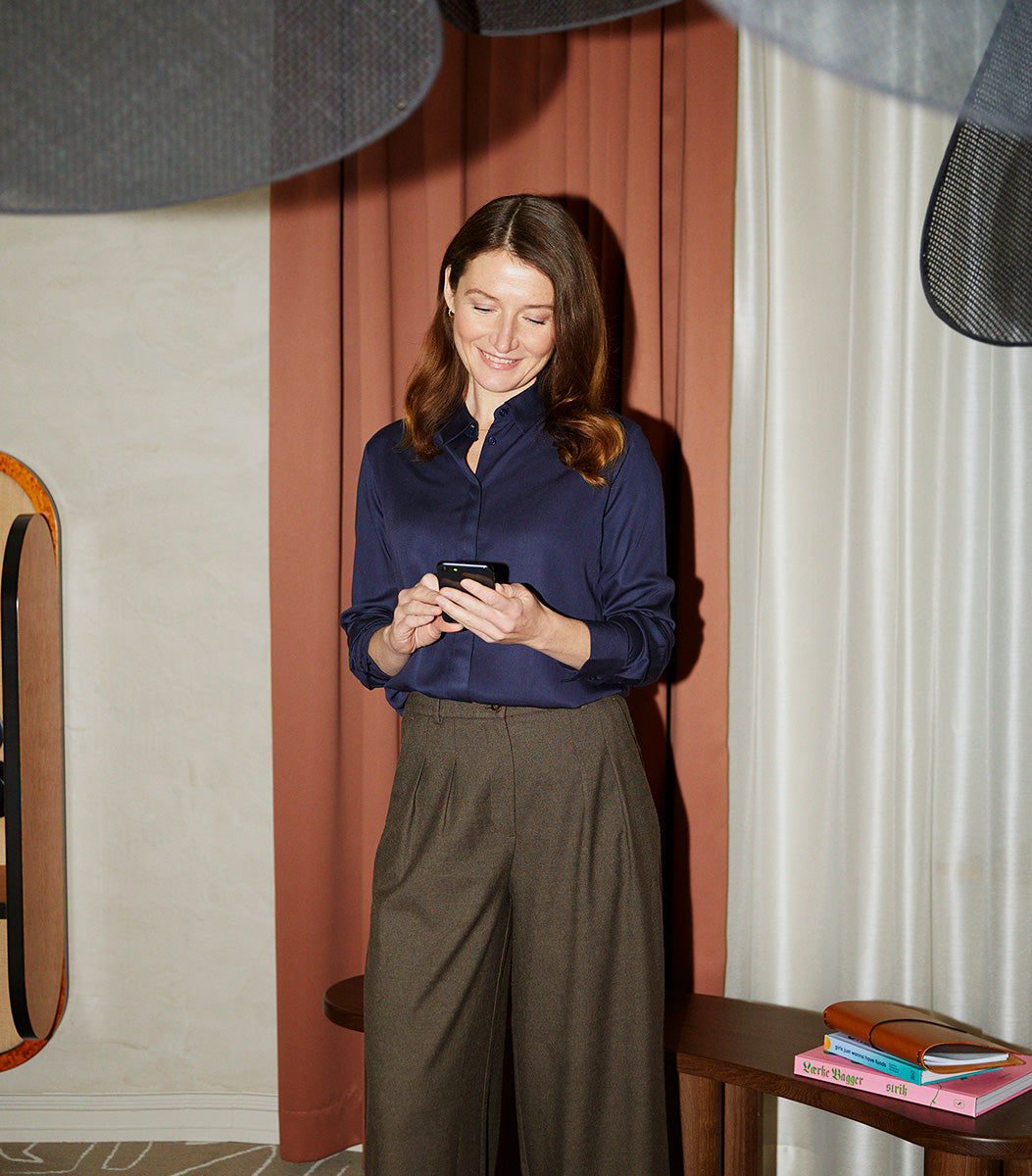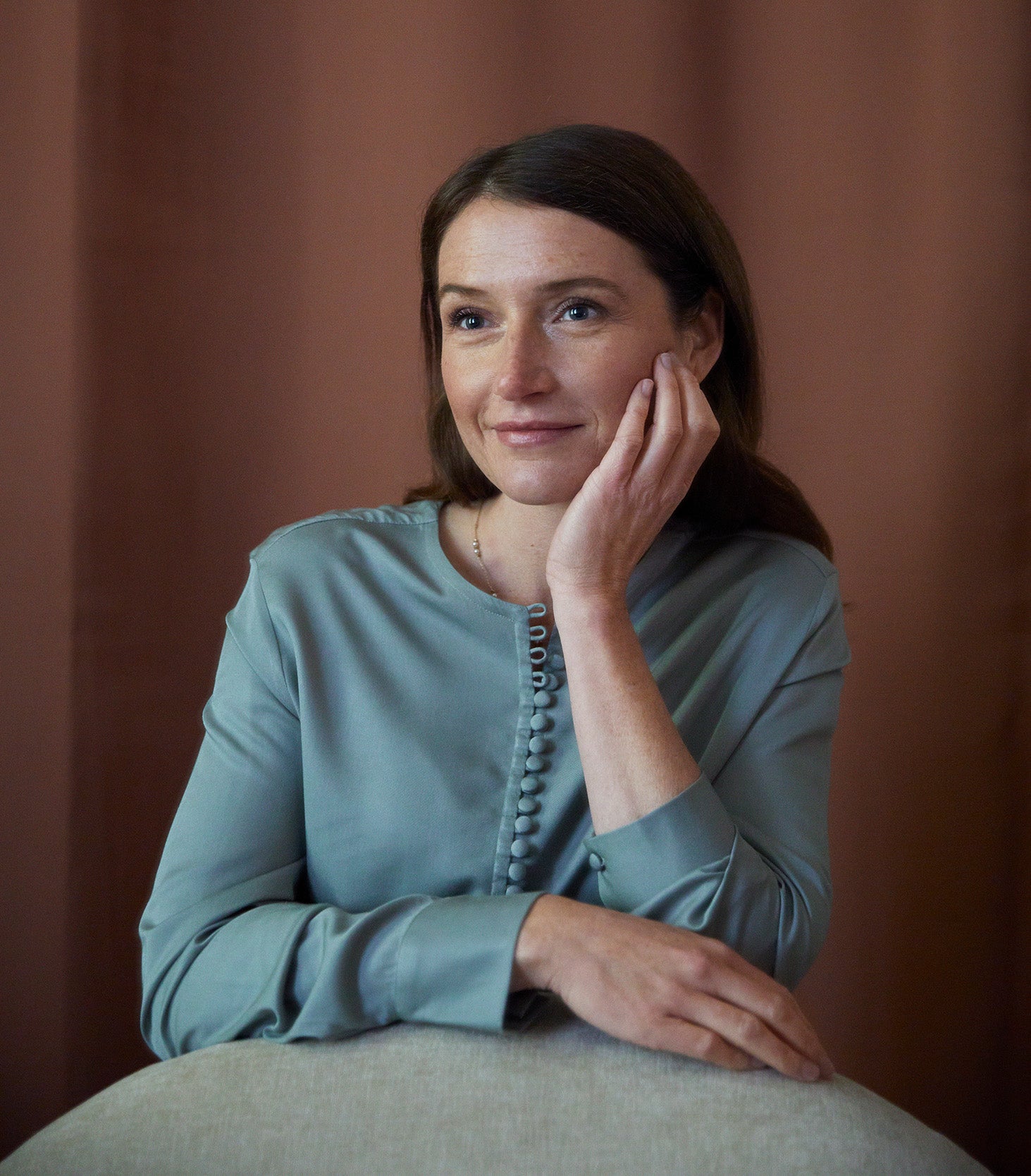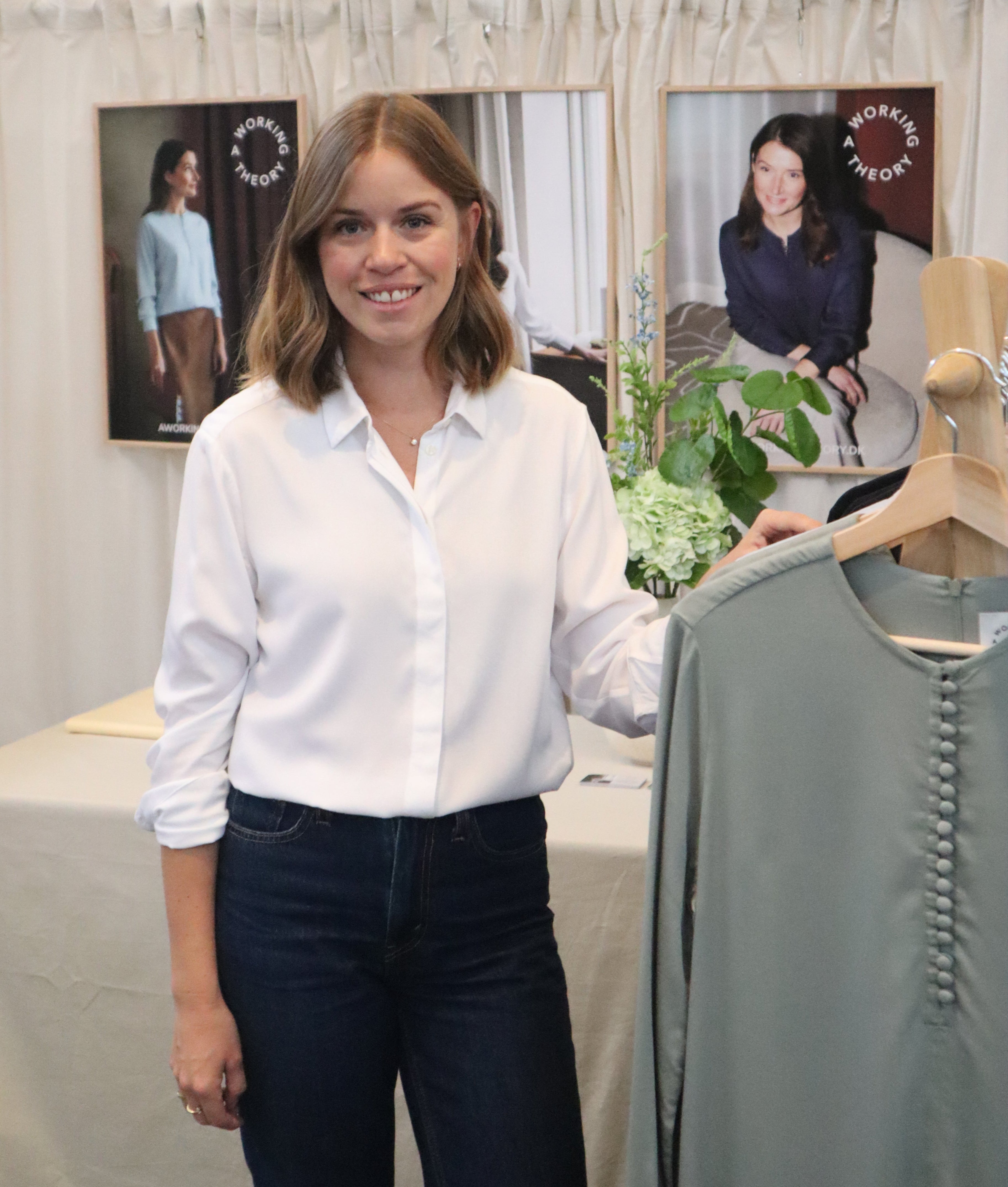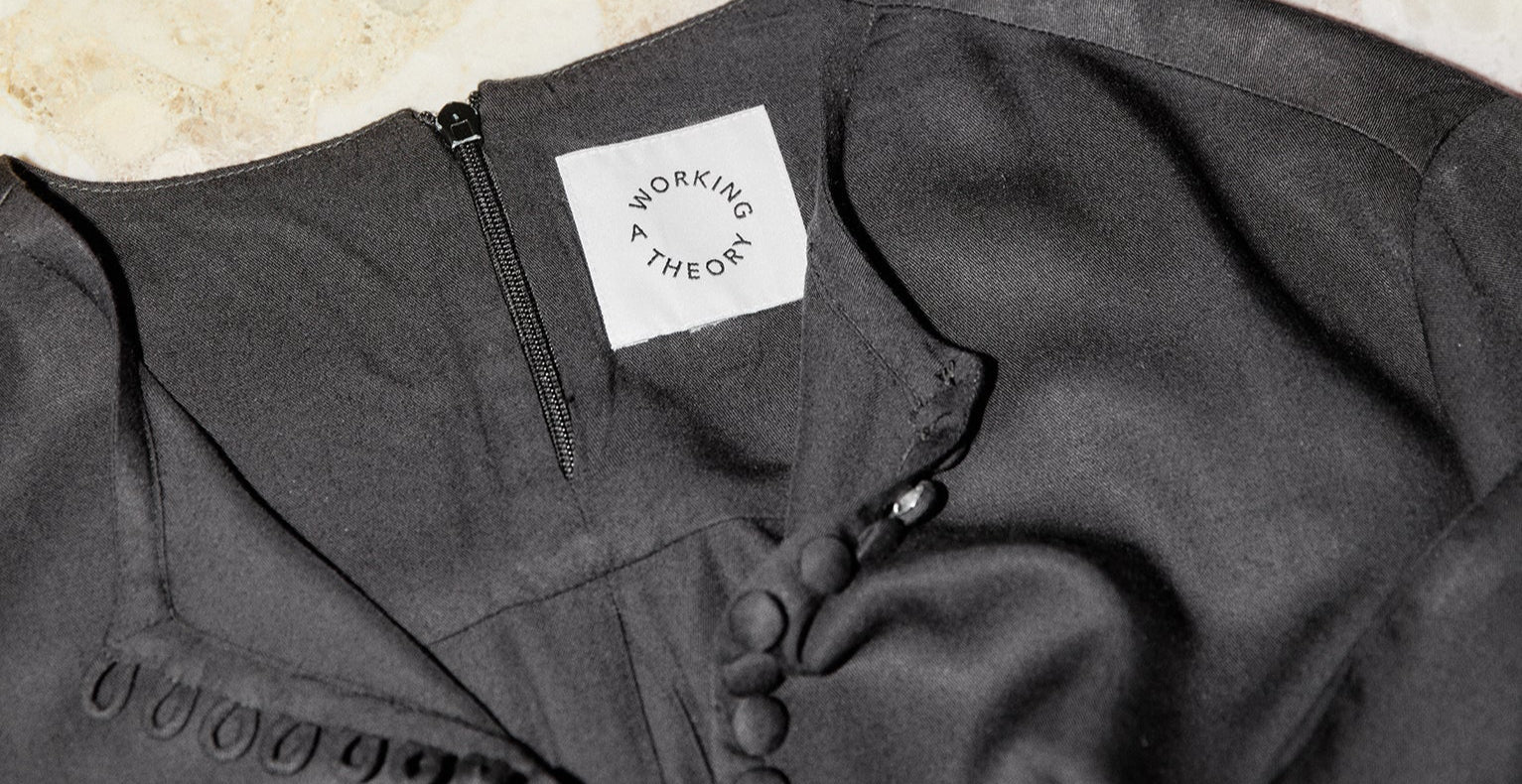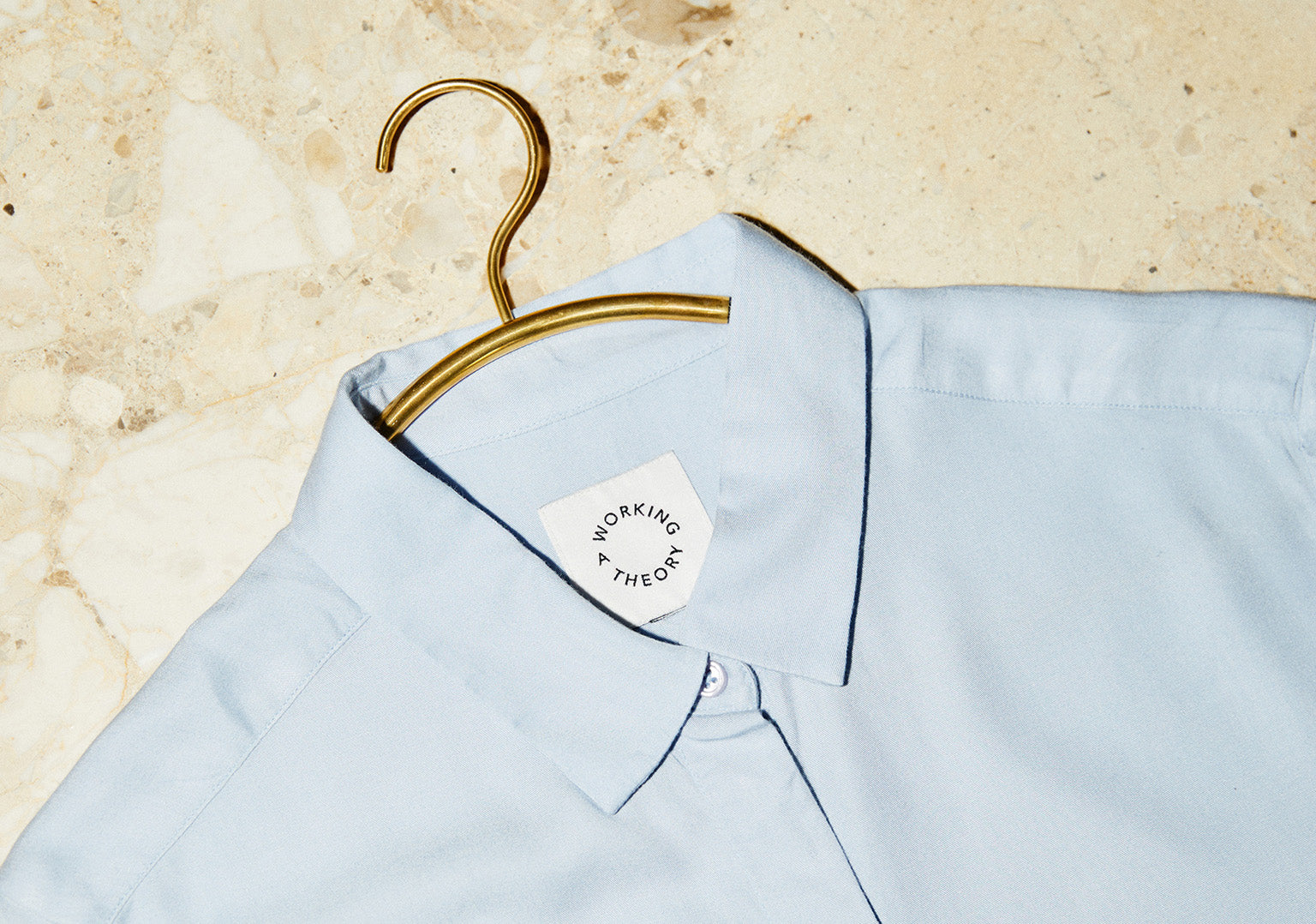What is viscose? Here's everything you need to know
What is viscose made of? Can you breathe in viscose? And what is the difference between rayon and viscose? Learn more about viscose fabric in this guide. Read here.
Worth knowing about viscose
Viscose is an incredibly versatile and popular textile, but what is it actually made of and how does it behave in practice? In this guide, we answer the most common questions about viscose, so you can learn more about the material's properties, benefits and challenges. Can you breathe in viscose? What is the difference between rayon and viscose? And does viscose actually shrink in the dryer?
Read on and learn more about why viscose is a preferred material in clothing production, how it differs from other fibers, and how to best care for it to maintain its beautiful appearance and long durability.
Why we use viscose at A Working Theory
At A Working Theory we work with slow fashion, where quality, responsibility and long-lasting designs are in focus. We want to create clothes that not only look beautiful, but also feel comfortable and can last for many years. That is why we have chosen to use LENZING™ ECOVERO™ viscose , which is one of the better alternatives to conventional viscose.
Conventional viscose can be problematic due to high environmental impact, high water consumption and lack of transparency in the production process. With LENZING™ ECOVERO™ we have found a certified alternative.
LENZING™ ECOVERO™ fibers are certified with the renowned EU Ecolabel for textile products (license no. AT/016/001). This label is awarded to products that meet high environmental standards. Important evaluation criteria include production processes that limit the use of substances that are harmful to human health or the environment, and minimize significant environmental impacts. The responsible production of LENZING™ ECOVERO™ fibers uses at least 50% less water and emits at least 50% less CO2 compared to conventional viscose fibers according to Higg MSI^, thus preserving valuable resources for future generations.
LENZING™ and ECOVERO™ are trademarks of Lenzing AG.
Our choice of viscose is also about comfort and fit. The viscose we use is:
-
Incredibly soft and feels luxurious against the skin.
-
Lightweight and breathable, keeping you cool and comfortable all day long.
-
Colorfast, so it retains its deep color wash after wash.
-
Beautifully draped, giving an elegant and flattering fall.
As part of our design philosophy, we focus on creating clothes that can be worn year after year - regardless of trends. We develop classic styles that can be combined across seasons, and which are created to last in both quality and expression. With our choice of materials, we combine aesthetics, comfort and responsibility - so you can feel good in your clothes, both physically and with a clear conscience.
What is viscose?
Viscose (also known as rayon and viscose) is a type of regenerated cellulose fiber. This means that natural cellulose is extracted from plants (typically wood) and chemically converted into textile fibers. The result can be called man-made fibers - the fibers originate from nature, but the production itself requires an extensive man-made process. Viscose was originally developed as a cheaper alternative to silk because of its soft, smooth structure and beautiful drape. Today, viscose is used in many textiles, including as a substitute for silk or cotton, because it feels comfortable and looks exclusive, but at a lower price.
What is viscose made of?
Viscose is made from cellulose from plant material, most often wood. The raw material can come from trees such as beech, spruce, pine, eucalyptus or even bamboo. The wood fibers are broken down and dissolved using chemicals until a viscous wood pulp solution called "viscose" is formed. The pulp is then pressed through fine nozzles to form thin strands of regenerated cellulose, which are then spun into yarn that is woven or knitted into fabric. In short: viscose is made from wood (or other plants) that has been converted into textile fibers using a chemical process.
Can you breathe in viscose?
Is viscose breathable? Yes, viscose is a fabric that allows the skin to breathe. The fibers absorb moisture from the skin very effectively. In fact, viscose can absorb almost twice as much water as cotton. This means that, for example, a viscose shirt or viscose blouse can absorb sweat and keep the skin dry, and will therefore feel comfortable - even in a hot and stuffy meeting room or on a busy road where you are on the move.
At the same time, viscose is not particularly heat-insulating, the material is light and does not stick to the body. The combination of lightness and high moisture absorption makes viscose ideal for hot weather, because it helps keep you cool and comfortable.
What is the difference between rayon and viscose?
In practice, there is no significant difference - rayon is the general name for regenerated cellulose fibers, and viscose is a specific type of rayon. In fact, the words are often used interchangeably. Viscose is often called rayon abroad, and the two terms refer to the same material.
How much does viscose shrink?
Viscose can shrink noticeably when washed, especially if washed incorrectly. Typically, viscose will shrink around 3-5% on the first wash. How much it shrinks exactly depends on the weave and pre-treatment of the fabric. The viscose we use, for example, shrinks less than conventional viscose - often less than 3%.
Does viscose shrink in the dryer?
Yes, there is a risk of that. You should avoid tumble drying viscose because the fabric shrinks easily in high heat conditions. The heat and tumbling cause the fibers to contract (and also cause unnecessary wear on your clothes). In addition to viscose fabric shrinking when tumbled, tumble drying can also worsen wrinkles and pull the clothes out of shape.
However, certain types of viscose can regain their shape by ironing or steaming, as long as the shrinkage has not been too severe.
The safest way to keep your viscose clothing beautiful and give it a long life is to let it air dry to maintain its shape and size.
Does viscose crease?
Yes, viscose tends to wrinkle. The fibres in viscose lose up to half their strength when wet, which means that the fabric easily creases and wrinkles during washing and drying. Viscose also wrinkles relatively easily when in use (i.e. while you are wearing it), especially if the fabric is pressed or folded. Compared to, for example, polyester, which hardly wrinkles, viscose wrinkles more easily.
But viscose's tendency to crease also depends on the quality of the fabric. At A Working Theory, you will find that our viscose shirts generally stay nice throughout the day. And since viscose is easily affected by heat, your body heat will usually cause any small creases that may occur to straighten out on their own.
Should viscose be ironed?
Often the answer will be yes. Viscose typically needs to be ironed after washing to become nicely smooth. Always iron viscose on low heat, as steam - especially on seams - can cause the quality to expand slightly and cause the seams to "bubble".
Also, avoid pressing the iron directly against the fabric (if necessary, hold it at a distance from the viscose and let the steam do the work). This way you avoid damaging the fibers.
You can also avoid using steam altogether. In many cases, the material will have a smoother appearance if you iron without steam.
Where does viscose come from?
Geographically, viscose production takes place in many places around the world. Large quantities of viscose are produced in Asia (e.g. in China, India and Indonesia), but viscose is also produced in Europe.
Historically, viscose was invented by the Frenchman Hilaire de Chardonnet in the late 19th century and then patented in England .
Is viscose a natural product?
Both yes and no. Viscose comes from natural raw materials, but because it undergoes chemical processing, many people do not consider it a pure natural product like wool, linen and cotton.
Cotton and flax can be used almost immediately after harvesting and processing, while viscose requires the plant material to be dissolved and rebuilt using chemistry. The result, the viscose fiber, is therefore man-made, even though the starting point for the viscose fabric is natural. Therefore, viscose is not a natural product in the classical sense, but rather an “artificial product based on natural material”.
Is viscose cotton?
No, viscose is not cotton - they are two different textile fibers. Cotton is a natural fiber that comes from the cotton plant and is used directly in the spinning process, while viscose is a fiber that is made by chemically converting wood pulp.
However, the two materials have a lot in common: Both are breathable, soft and absorbent. Viscose feels pleasantly soft against the skin, like cotton.
Is viscose synthetic?
Viscose is not fully synthetic, but it is not a natural fiber either. Synthetic textiles such as polyester, nylon and acrylic are made from petroleum/oil products through chemical reactions, while viscose is made from natural plant cellulose using chemicals.
Because viscose is based on a natural raw material, it differs from purely synthetic fibers. However, the manufacturing process means that it is not a “natural” fiber in the same way as wool or cotton. You could say that viscose is artificially made from a natural material.
How to wash viscose?
Washing instructions for viscose: We recommend that you wash viscose at 30 degrees. Let the garment dry on a hanger and straighten it with your hands to minimize wrinkles. Do not rub or twist the fabric as this can damage the fibers. We have also made a guide on how to remove yellow stains on white clothes and the article How to get makeup out of clothes?
Ironing is recommended to achieve the most luxurious and soft finish - and once the clothes are ironed, they stay nice throughout the day.
Advantages of viscose
- Soft and comfortable: Feels silky, does not stick to the body and does not become static.
- Breathable and moisture-wicking: Viscose's breathability keeps the body cool and dries quickly.
- Lightweight with a nice drape: Drapes beautifully and is reminiscent of silk.
- Versatile: Can be varied in texture and mixed with other fibers for better properties.
- Affordable luxury alternative: Has an exclusive look without costing as much as silk.
- Colorfast: Keeps colors beautiful and fades less when washed.
- Biodegradable: Breaks down faster than synthetic materials.
Disadvantages of viscose
- Environmental impact: Requires a lot of water and chemicals, which is why you should always choose viscose that is certified with the EU Ecolabel.
- Shrinks easily: Wash gently at low temperatures and do not tumble dry.
- Curls easily: Must be ironed often to keep it neat. However, this is often related to the quality of the viscose produced.
Viscose vs polyester
There is a big difference between viscose and polyester, both in terms of comfort, quality, durability and their environmental footprint.
First of all, polyester and viscose behave quite differently as textiles. Polyester is known for being very durable: the fibers are robust and last a long time, even with repeated use and washing. Polyester fabric has virtually no shrinkage and minimal wrinkling, so the garment keeps its shape. It also retains its color and shape over time and dries quickly after washing. On the other hand, polyester is not very breathable and can be a bit of a sweat catalyst.
Viscose, on the other hand, can shrink and crease more easily than polyester. On the other hand, viscose has the quality of feeling more natural and drapes more nicely. It is soft, light and breathable, making it ideal for warm weather. Viscose wins in terms of its aesthetics and exclusive feel, but requires more careful treatment to remain neat.
Viscose and polyester also affect the environment in different ways. Viscose is made from renewable resources, such as wood and bamboo, and the fiber is biodegradable. Conventional viscose is produced using harsh chemicals that risk being released into the environment.
Polyester, on the other hand, is made from petrochemicals, which means it comes from a non-renewable resource. Polyester production requires a lot of energy and involves the emission of greenhouse gases. The fiber itself is non-biodegradable, so a polyester shirt could be left in nature for decades or longer without breaking down.
Footnote:
^Results based on LCA standards (ISO14040/44) and available via Higg MSI (Version 3.7)

